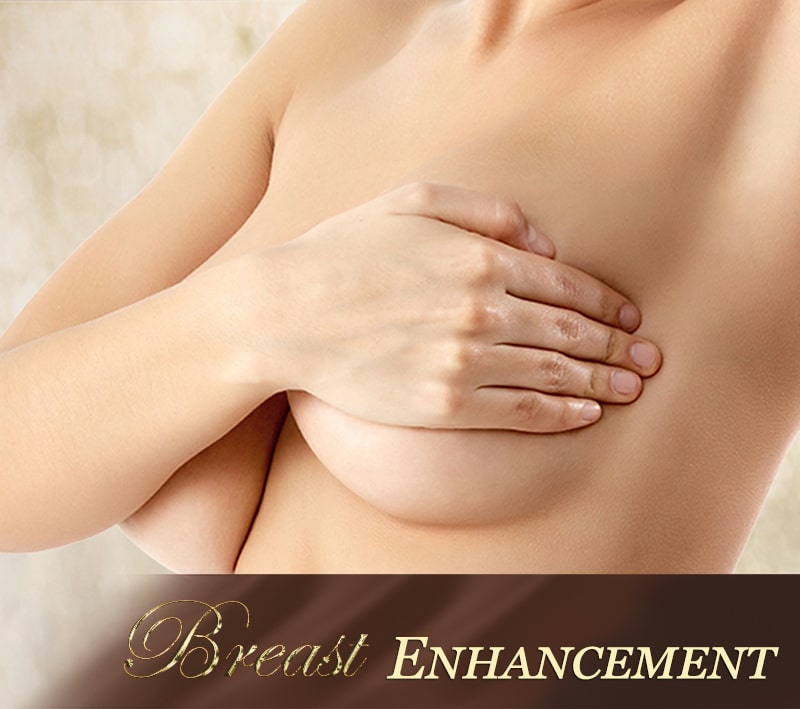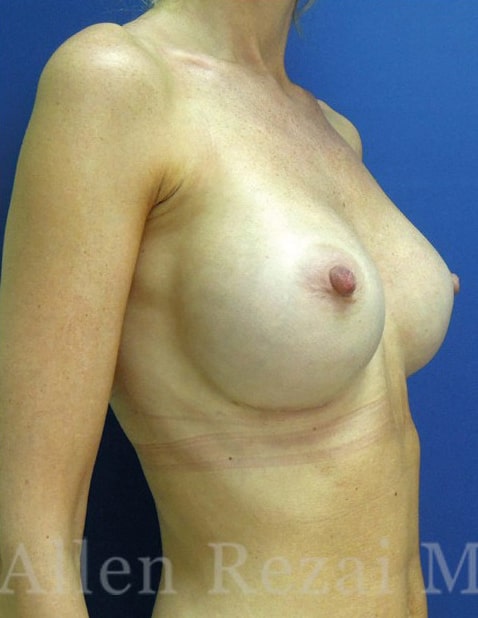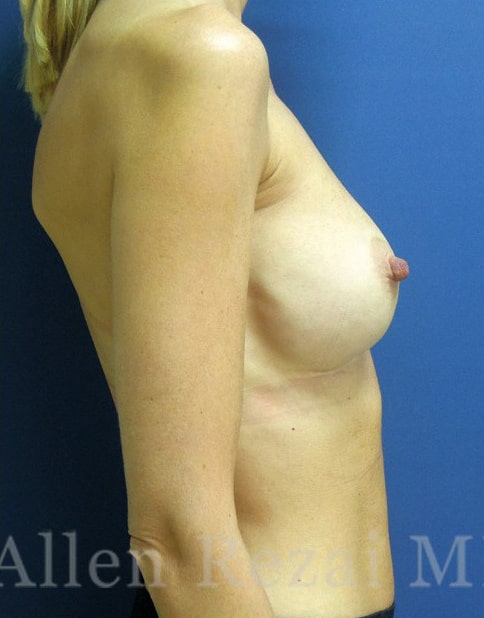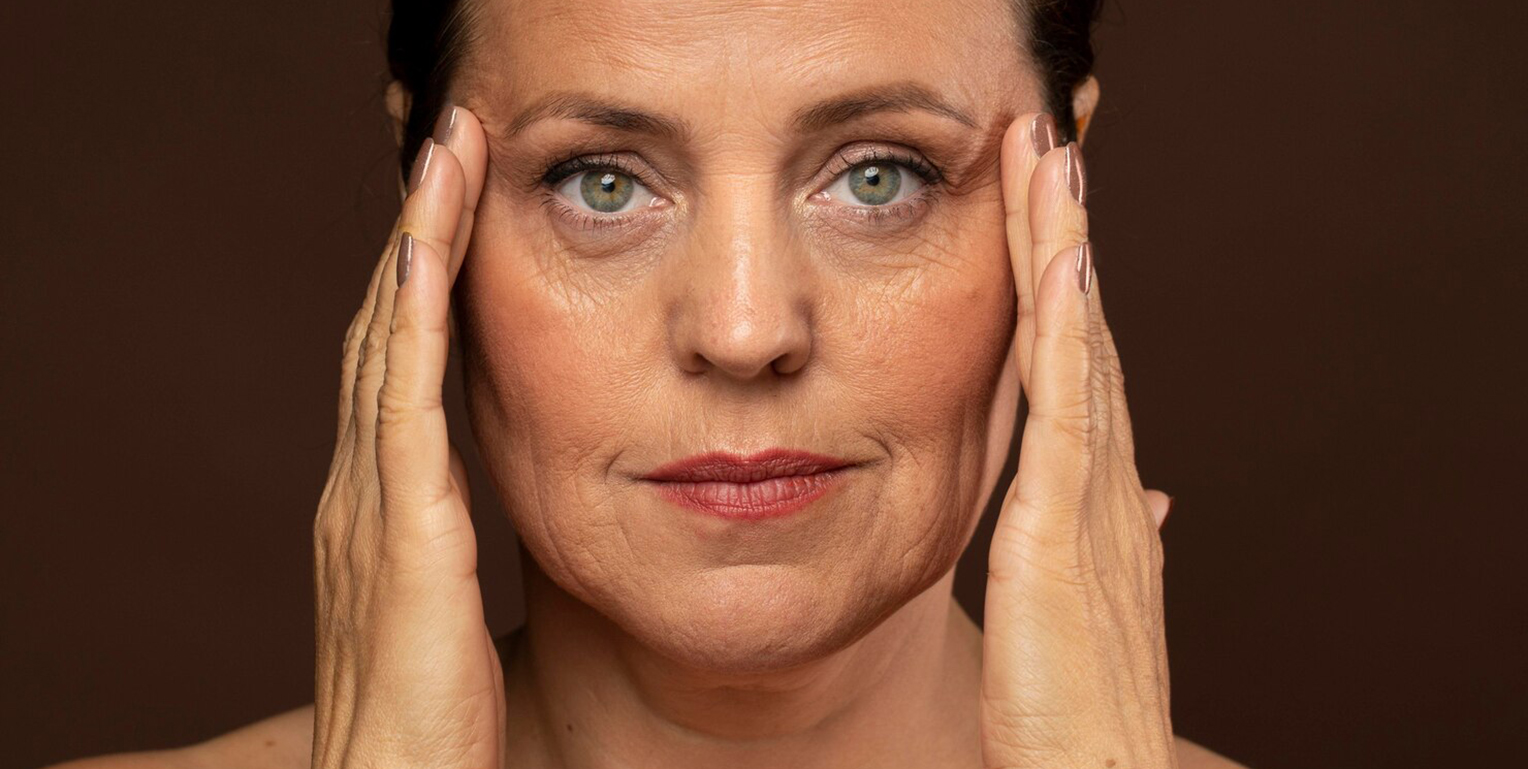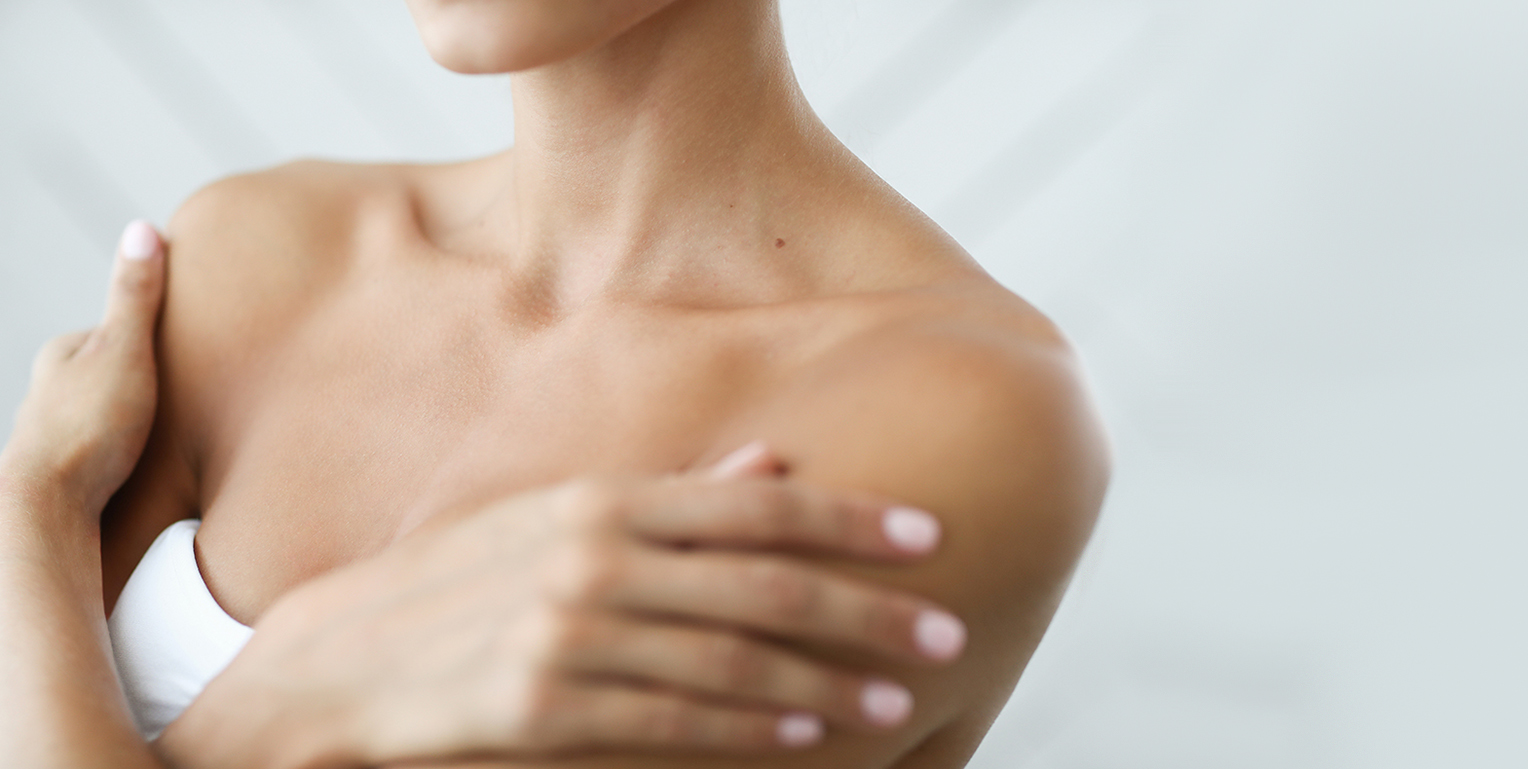A Combination of Fat Transfer and Breast Implants
With any type of breast surgery, Mr Rezai aims to create a breast size and shape that complements the patient’s figure, rather than one which under or overwhelms it, and this has everything to do with proportion. When planning for breast implant augmentation, he considers the patient’s height, weight, width of shoulders and hips, breast width, breast height and the distance that exists between the nipple and breast fold, as well as the patient’s preference in terms of upper and lower breast pole volume to determine the best breast implant type and size for the patient’s body, as well as the best surgical techniques to employ.
Combined Approach
However, in cases where a patient lacks natural breast tissue, combining fat transfer with implant augmentation in the hybrid method will significantly improve the look and feel of the breast, especially in the medial, lateral and inferior parts of the breast, as the upper pole will already be covered by the muscle. This is where the hybrid method would benefit the patient and create a more natural look and feel to the breast.
Fat transfer has been used in breast reconstruction surgeries for some time. Alone, it is an effective method for correcting asymmetries and breast shape in individuals with breast deformities, filling breast defects following lumpectomy for breast cancer, or it may also be an option for total breast reconstruction following mastectomy; however, to achieve sufficient breast volume and reduce the need for multiple surgeries for desired outcome, hybrid augmentation may be a better solution. In implant breast reconstructions, especially following mastectomy, the patient lacks natural breast tissue, and the transferred fat will act as a barrier between the implant and skin, cushioning the implant to create a more natural look and feel.
The hybrid augmentation technique is used for a similar purpose in cosmetic breast enhancements. It is employed to create a natural look and feel for patients who lack natural breast tissue, or have lost natural breast tissue due to severe capsular contracture with previous implants (hardness and calcification of the tissue surrounding the implant), or simply to correct volume asymmetry or smooth out contour irregularities.
In traditional implant breast augmentations, Mr Rezai normally recommends three different sizes to patients – one that would create a “small” natural look, one that would look “completely” natural and one that would provide them with a “fuller” natural look. In hybrid breast augmentations, whenever possible he prefers to use the implant size which would provide the “completely” natural look. This will allow for the required correction and cushioning without compromising the result in terms of proportion.
“In cases where a patient lacks natural breast tissue, combining fat transfer with implant augmentation will significantly improve the look and feel of the breast”
Before & After Photos
Before and after a hybrid augmentation on a patient who had developed wrinkles and rippling on the lateral side of her right breast (oblique and side view).
Would I Benefit From Hybrid Breast Augmentation
It would be unnecessary to carry out a hybrid augmentation when patient has no real indication for it. If a patient has enough natural breast tissue without any visible asymmetries or deformities, then a natural look and feel can be achieved with implant augmentation alone, subject to correct implant selection and surgical planning. Normally, patients who lack natural breast tissue to cover the implants, those with asymmetrical breasts or those who have a wide gap between the breast are ideal candidates for hybrid breast augmentation, providing they have appropriate fat to harvest. This is usually taken from the flanks, abdomen or thighs.
The Procedure
In hybrid breast augmentation, the implant augmentation is completed first, placing the implants in the desired pockets and closing the wound. Then, the previously agreed donor area is prepared and an adequate amount of fat is harvested, using a blunt cannula connected to a syringe and a closed system for a careful extraction of fat cells. The obtained fat is washed and purified using a centrifuge or special filtration process to prepare the fat cells. The prepared fat is then transferred into the desired areas of the breast using a syringe connected to a blunt cannula. The cannula is passed in and out of the areas to be augmented multiple times. Each time the cannula is withdrawn, the fat is carefully deposited in natural tissue planes.
This process is repeated until the desired correction or volume is achieved. It normally takes up to three to four months for the transferred fat cells to “take”. The patient may lose about 30% of the transferred fat cells, however a second session of fat transfer will not be necessary as the main shape and volume of the breast is achieved with the implants; the fat cells are only there to complement the lack of natural tissue in certain areas of the breast.
Other Considerations
Downtime may be slightly longer than with traditional implant augmentation, as the donor site where the fat has been harvested from, will be tender and swollen for a few weeks. There is one specific side-effect that is associated with fat transfer and that is fat necrosis. This refers to the part of the transferred fat that may not receive enough nutrients and become hard. Depending on the size of the fat necrosis, this does not have any health implications and generally does not concern patients. In many cases the fat is resorbed by the body, however sometimes it may be felt and cause discomfort, and in these instances it would need to be removed surgically. Fat necrosis may also occur on the donor site where the fat is harvested from.


